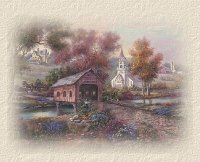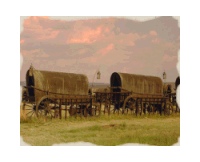
 Birth Notes: Birth Notes:
Robertson, Delia. The First Fifty Years Project. http://www.e-family.co.za/ffy/g13/p13568.html
And
http://www.geni.com/people/Anna-de-Koning/6000000000541559948?from_flash=1&fsession_id=1455092676544&through=6000000000541559948
 Christening Notes: Christening Notes:
Robertson, Delia. The First Fifty Years Project. http://www.e-family.co.za/ffy/g7/p7407.html
 Death Notes: Death Notes:
http://www.geni.com/people/Anna-de-Koning/6000000000541559948?from_flash=1&fsession_id=1455092676544&through=6000000000541559948

 Sources of information or noted events in her life were: Sources of information or noted events in her life were:
Web Based Info. Robertson, Delia. The First Fifty Years Project. http://www.e-family.co.za/ffy/g13/p13568.html
Photographs. Robertson, Delia. The First Fifty Years Project. http://www.e-family.co.za/ffy/g7/p7407.html
General Comment. Biography (English)
Anna de Koningh, daughter of Captain de Koninck of the ship Drommedaris during the time of Governor Simon van der Stel was born in Batavia, one of three children of the slave known as Angela of Bengal. She was born in bondage, circa 1661, and was most likely owned by Johan Anthoniszoon van Riebeeck (1619-1677) in de Caep de Goede Hoop. The whole family was brought to the Cape by Pieter Kemp, a Free Burgher of Batavia, who sold them to Jan van Riebeeck . In 1662 Van Riebeeck sold the family to Abraham Gabbema, who when he was transferred to Batavia in 1666 set Angela and her three children free. It is not known what happened to her husband. In 1669 Angela married the Free Burgher Arnoldus Willemsz from Wesel, later known as Arnoldus Willemsz Basson; they had three children.[1][2] Anna de Coningh, Jacobùs van As and Johannes van As were most likely the children who were emancipated with their mother, Angela van Bengale, by Abraham Gabbema, on 13 April 1666 de Caep de Goede Hoop. She potentially witnessed the baptism of Elsie NN on 29 June 1681 at Nederduitsch Gereformeerde Kerk, (Cape Town), de Caep de Goede Hoop (this witness has not been positively identified.) She and Abraham Diemer witnessed the baptism of Anna Lysbeth van As on 23 April 1690 at Nederduitsch Gereformeerde Kerk, (Cape Town), de Caep de Goede Hoop. She and Gerrit Basson witnessed the baptism of Arnoldus Willemsz Basson on 24 May 1693 at Nederduitsch Gereformeerde Kerk, (Cape Town), de Caep de Goede Hoop. She and Commandeur Simon van der Stel and Joan Vieroot witnessed the baptism of Joannes Vieroot on 29 August 1694 at Nederduitsch Gereformeerde Kerk, (Cape Town), de Caep de Goede Hoop. She and Olof Bergh witnessed the baptism of Oeloff Martini Bergh on 25 April 1722 at Nederduitsch Gereformeerde Kerk, Stellenbosch, de Caep de Goede Hoop.[1] Anna de Koningh was born in Batavia, one of three children of the slave known as Angela of Bengal. The whole family was brought to the Cape by Pieter Kemp, a Free Burgher of Batavia, who sold them to Jan van Riebeeck (1619-1677). In 1662 Van Riebeeck sold the family to Abraham Gabbema, who when he was transferred to Batavia in 1666 set Angela and her three children free. It is not known what happened to her husband. In 1669 Angela married the Free Burgher Arnoldus Willemsz from Wesel, later known as Arnoldus Willemsz Basson; they had three children. Thus it was that a former soldier who had spent a term in prison and his wife, Anna de Koningh, the child of Batavian slaves, became owners of Groot Constantia. Not much is known about the period of Bergh's ownership, but it is generally assumed that he did little about viticulture on the farm. This is supported by the fact that during this time the wines of Johannes Colijn of Klein Constantia (the present De Hoop op Constantia), began to draw attention overseas and became known as Constantia wine. When Bergh died in 1724, his wife, who inherited the farm, also appears to have neglected viticulture. There were only 1126 litres of red wine in the cellar when she died in 1734. The inventory of her estate, which includes Groot Constantia and provides the first known list of movable property on the farm, refers to a loft above the wine cellar used for storage but none of the goods kept there had anything to do with viticulture. It is doubtful, in fact, whether she ever lived at the farm. It is not even mentioned in her will, suggesting that she intended it to be sold. The inventory gives the names of 27 slaves who worked at Groot Constantia, all of them described as boys, most of them having come from the Indian Archipelago and Madagascar. One was from Anna's mother's birthplace, Bengal; another was a Zulu from Natal called Snaphaan. Source: Groot Constantia (Chapter 2; Ollof Bergh and Anna de Konnigh 1716-1734). Of the first 14 slaves in the Cape up to March 1658, four were children under the age of 12, and of the ten adults, 6 were from India. These were Maria van Bengal (1655), Catharina van Bengal (1656), Catharina van Palicatte (1657), Angela van Bengal (1657), Domingo van Bengal (1657) and Maria van Bengal (1658). We also know that the first slaves to be freed were Catherina van Bengal in 1657 who married the superintendent of Robben Island, Jan Wouterssen; Maria of Bengal in 1658; and Angela of Bengal (Maai Ansiela) in 1666. Ansiela was the first Free Black person to own land in Heerenstraat, Cape Town. She was later to marry Free Burgher Willemz known as Basson. One of her freed slave daughters Anna de Koningh (not fathered by Basson), married Olaf Burgh and inherited Groot Constantia after his death.[3] We learn from Adam Tas in his diary (Thursday 24 December 1705) that according to his labourers the governor Willem Adriaan van der Stel's wife had previously tried to commit suicide & that the Cape-born mestiça Anna de Coninck / Coning(h) / Koning (c. 1661-1734) - daughter of Engela / Angela aka Maaij Ansela van Bengale & Moeder Jagt & wife to Ensign Olof Bergh (from Gothenburg in Sweden) - had come to her rescue: "Fair morning. Our labourers were busy carting the corn to the homestead, and cutting what corn was still standing. They tell me this day that the Governor's wife had, in a fit of despondency, tried to drown herself by jumping into the fountain behind the house at the Cape; however, Mrs. Berg was on the spot, and ran to help her, pulling her out of the water, to whom the Governor's wife lamented bitterly that her life had become one of terror for her on account of the many scandalous acts she must daily hear and witness. A singular affair, which gives reason for not a little thought ..."[4] When Bergh died in 1724, his wife, who inherited the farm, also appears to have neglected viticulture. There were only 1 126 litres of red wine in the cellar when she died in 1734. The inventory of her estate, which includes Groot Constantia and provides the first known list of movable property on the farm, refers to a loft above the wine cellar used for storage but none of the goods kept there had anything to do with viticulture.[3]
Biografie (Afrikaans)
In 1655 koop Jan van Riebeeck die slavin Angela van Bengale(n) by Pieter Kemp. Toe Van Riebeeck se kleindogter, Johanna Maria, die Kaap in 1710 besoek, skryf sy in 'n brief van "Ansiela", die vrou wat haar vader en sy broers en susters (d.w.s. die Van Riebeeck-kinders) opgepas het. Sy skryf verder dat Ansiela later met 'n Hollander getroud is en dat haar dogter die vrou van kaptein "B." was. Dit is inderdaad so dat "Maai" Ansiela, ná haar vrystelling met Arnoldus Basson getroud is en die stammoeder van die Basson-familie in Suid-Afrika geword het. (Maai is blykbaar afgelei uit moei 'tante' [1e keer gedokumenteer 1201-1250] wat eintlik die vleinaam is vir moeder. WNT). Terwyl Angela nog 'n slavin was, is haar dogter, Anna de Koning, uit 'n buite-egtelike verhouding met 'n Europeër gebore. Anna was nie net mooi van aansien met fynbesnede gelaatstrekke nie, maar was ook geletterd en het met 'n vaste hand dokumente onderteken. Sy was met kaptein Oloff Bergh getroud en het op haar beurt die stammoeder van die Bergh-familie in Suid-Afrika geword.[5][3]
http://www.wikitree.com/wiki/De_Koningh-1

Anna married Capt. Olof Bergh on 10 Sep 1678 in , Cape Colony, South Africa. (Capt. Olof Bergh was born on 16 Apr 1643 in Göteborg, Västergötland, Sweden and died on 19 Jul 1725 in , Cape Colony, South Africa.)
 Sources of information or n events in their marriage were: Sources of information or n events in their marriage were:
Web Based Info. Robertson, Delia. The First Fifty Years Project. http://www.e-family.co.za/ffy/g7/p7612.html
Bef 18 Jun 1679
And
http://www.wikitree.com/wiki/Bergh-143

|



